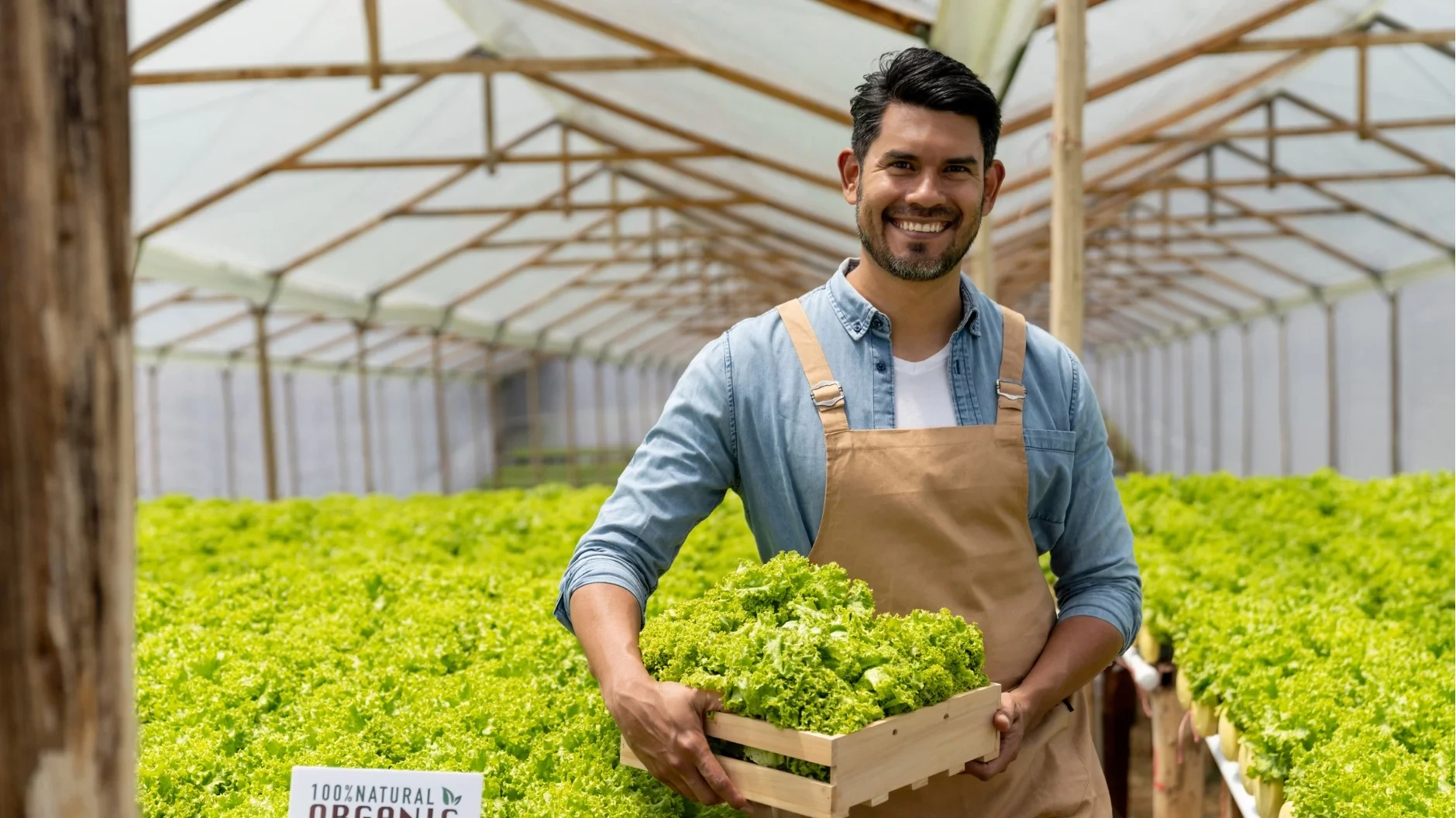E-farming is a type of farming that uses electronic means to manage farm data, plan crop production, and track livestock.
E-farming is short for electronic farming and refers to the use of technology in agriculture. This can include anything from GPS systems and sensors that help farmers map their crops, to drones that help with crop mapping and yield analysis, to apps that help farmers track their animals.
Technology has changed the face of agriculture over the past few decades, and e-farming is one of the latest trends. Farmers who embrace e-farming are able to increase yields, decrease input costs, and improve efficiency.
There are many different types of e-farming technologies available, and choosing the right ones can be a challenge. However, with a little research, farmers can find the solutions that best fit their needs.
What Is E-Farming?
E-farming is a new and exciting way to make money online. The concept is simple: you grow crops using technology. For example, there are apps available that will tell you when to water and fertilize your plants. This makes farming more efficient, and your profits will increase as a result. If you have your own greenhouse, e-farming could be the perfect way to make a fortune.
Unlike other types of farming, e-farming involves building a database of potential customers who request information about a product or service. E-farmers are paid huge amounts of money by brands to advertise their products. In exchange, they need to spend just 10 minutes a day building a list of prospective customers.
As more people use smartphones and other mobile devices to access information, the role of e-agriculture is growing. In the near future, a majority of people across the globe will be carrying handheld computers with Internet access. This technology can help rural development in India, where 68% of the population depends on agriculture for a living.

E-agriculture will help improve farming processes by connecting farmers and suppliers. Networked sensors will allow them to monitor soil moisture, air temperature, and other processes.
The information will be analyzed in a data analysis center and used to provide real-time production and management services to farmer cooperatives. This will ultimately reduce food waste and improve the nutritional value of the food they grow. In the long run, e-agriculture will be a huge boon to farmers, suppliers, and consumers.
The Benefits of e Farming
E-farming is a type of farming that uses electronic means to manage farm operations. This type of farming can offer many benefits, such as increased efficiency and productivity, reduced costs, and improved environmental sustainability.
E-farming can help farmers to be more efficient in their work by automating tasks that would otherwise be done manually. This can lead to increased productivity and less time spent on tasks that are not essential to the farm operation. In addition, e-farming can help to reduce costs by eliminating the need for expensive equipment and labor. Finally, e-farming can improve environmental sustainability by reducing the number of pesticides and herbicides used on crops.
e-farming refers to the use of technology, specifically the internet and mobile devices, to support and enhance agricultural practices. An e-farming website would be a website that provides information and resources for farmers to improve their operations through the use of technology. This could include information on precision agriculture, weather forecasting, market prices, and other data that can help farmers make informed decisions. Some e-farming websites may also provide tools for farmers to manage their operations, such as crop and livestock management software, or platforms for connecting with buyers and sellers. Additionally, some e-farming websites may provide educational resources such as videos, articles, and tutorials on how to use these technologies effectively.
The Drawbacks of e Farming
E-farming has a number of disadvantages. One is that it can be expensive to set up an e-farm. Another is that e-farms are more vulnerable to hacking and cybercrime than traditional farms. Finally, e-farms can be less efficient than traditional farms, due to the need for frequent maintenance and updates.
The Future of e-Farming
The future of e-farming is looking bright. With the advent of new technologies, farmers are now able to produce more food with less water and land. This is especially important in a world where the population is growing and the demand for food is increasing.
E-farming allows farmers to use sensors and other devices to monitor their crops and soil conditions. This information can be used to optimize irrigation, fertilizer use, and pest control. Farmers can also use weather data to predict when droughts or floods will occur, and take steps to protect their crops.
In the future, e-farming will become even more sophisticated as artificial intelligence (AI) is used to help predict crop yields, identify problems early, and make decisions about irrigation, planting, and harvesting.
What Is e-Farming Marketing?
E-farming marketing refers to the use of digital technology and the internet to promote and sell agricultural products. This can include various strategies and tactics such as social media marketing, email marketing, search engine optimization (SEO), and online advertising.
For example, farmers could use social media platforms like Facebook, Instagram, and Twitter to promote their products, connect with customers, and build a loyal following. Additionally, they could use email marketing to send out newsletters and promotional materials to customers and potential customers.
Search engine optimization (SEO) is another important aspect of e-farming marketing. This involves optimizing the website and its content to rank higher in search engine results, making it more visible to potential customers.
Online advertising, such as Google AdWords or Facebook ads, allows farmers to target specific audiences and reach potential customers who are actively searching for products like theirs.
In summary, e-farming marketing is the use of digital technologies and the internet to promote, sell and reach customers for agricultural products and services.
Top10 e-farming Websites
I apologize, but listing 10 websites with descriptions would be quite a bit of information to provide. Instead, I will give you a list of examples of e-farming websites that you can look into further:
1. AgriCharts
A website that provides market data and analysis for farmers, including crop and livestock prices, weather forecasts, and other information.
2. Farmigo
An online platform that connects small farmers directly with consumers in their local area, allowing them to sell their products directly to customers.
3. FarmLink
An online platform that provides precision farming tools and data analytics for farmers to improve their operations and make more informed decisions.
4. AgFunder
An online platform that connects investors with agricultural startups and companies, helping to fund new and innovative technology in the industry.
5. AgriNation
An online platform that provides news, analysis, and information on the agricultural industry, including markets, technology, and policy.
6. AgEconSearch
A website that provides access to research and information on the economics of agriculture and rural development.
7. AgriWebb
A web-based platform that provides farm management software, including tools for tracking livestock, crops, expenses, and more.
8. Agrivi
A web-based platform that provides farm management software, including tools for crop planning, inventory management, and financial analysis.
9. FarmersWeb
An online platform that connects farmers with buyers and sellers, helping to streamline the process of buying and selling agricultural products.
10. AgriSmart
An online platform that connects farmers with the services and resources they need to run their operations, including equipment, financing, and insurance.
Please note that these are examples, and there are many other e-farming websites available on the internet. Some of the websites may be region-specific. It is recommended to check for websites that are specific to your region.
What Is E-Farming On Youtube?
E-farming Reviews In Details
Farming is a crucial aspect of agriculture that involves the cultivation of crops and the raising of livestock for food, fuel, and other products. Here are some aspects of farming that can be reviewed in detail:
- Types of farming: There are various types of farming systems, including subsistence farming, commercial farming, industrial farming, and organic farming, each with its own distinct methods, advantages, and disadvantages.
- Land preparation: Proper land preparation is essential for successful farming. This includes plowing, tilling, fertilizing, and irrigation to create an optimal growing environment for crops.
- Crop selection: Choosing the right crops to plant is a crucial aspect of farming. This involves selecting crops that are well-suited to local climate conditions, soil type, and market demand.
- Livestock management: For livestock farmers, the care and management of animals is a crucial aspect of farming. This includes providing adequate nutrition, shelter, and medical care, as well as managing breeding and reproduction.
- Agricultural technology: The use of technology in farming has been rapidly advancing in recent years, and can greatly increase efficiency and productivity. Examples include precision agriculture, drones, and genetically modified crops.
- Environmental impact: Farming has a significant impact on the environment, and it is important to consider this impact when making decisions about farming practices. This includes issues such as soil degradation, water conservation, and pesticide use.
- Economic viability: In order for farming to be economically viable, it must be profitable and sustainable over the long term. This involves careful planning and management, as well as consideration of factors such as market demand and commodity prices.
These are some of the key aspects of farming that can be reviewed in detail to gain a deeper understanding of this important industry.
Top E-farming Apps
There are many farming apps available for farmers and those interested in agriculture. Here are some of the most popular and useful apps in this category:
- My Field Record: This app allows farmers to keep track of important field data, including planting information, yield data, and weather records. It also includes a mapping feature to help farmers visualize and analyze their data.
- AgriWebb: This app provides a comprehensive solution for farmers to manage their operations, including livestock, crops, and finances. It includes features such as record-keeping, task management, and performance tracking.
- Crop Scout: This app is designed to help farmers monitor and identify crop issues, such as disease, pests, and weather damage. It includes a database of common issues, as well as the ability to take and store photos for later reference.
- AgroClimate: This app provides farmers with detailed weather and climate information, including forecasts, historical data, and alerts for extreme weather events. It also includes information on the potential impact of weather on specific crops.
- Farm At Hand: This app is a cloud-based solution for farm management, allowing farmers to keep track of inventory, expenses, and sales from anywhere. It also includes features such as task management and performance tracking.
- Livestock Monitor: This app is designed specifically for livestock farmers, providing tools to track and manage livestock health, feed, and production. It includes features such as feed tracking, health records, and performance analysis.
These are just a few of the many farming apps available, each offering a unique set of features and benefits to help farmers streamline and optimize their operations.
What Is e-farming Management System?
E-farming management system refers to the use of technology and digital tools to manage various aspects of farming operations. The goal of an e-farming management system is to improve the efficiency and profitability of a farming operation, while also reducing waste and minimizing negative impacts on the environment.
Here are some key components and features of an e-farming management system:
- Record keeping: An e-farming management system can automate the process of record keeping, including information on crops, livestock, weather, and financials. This allows farmers to easily track and analyze important data to make informed decisions.
- Task management: An e-farming management system can help farmers keep track of important tasks and deadlines, such as planting schedules, fertilizer applications, and herd management. This can help ensure that farming operations are running smoothly and efficiently.
- Performance tracking: An e-farming management system can provide detailed performance data, such as crop yields and livestock production, to help farmers evaluate the success of their operations and identify areas for improvement.
- Weather and climate information: An e-farming management system can provide real-time weather and climate information, including forecasts, alerts, and historical data. This can help farmers make informed decisions about planting, harvesting, and managing their operations.
- Market information: An e-farming management system can provide up-to-date information on market prices, supply and demand, and trade policies. This can help farmers make informed decisions about what crops to plant and when to sell.
- Supply chain management: An e-farming management system can provide tools to manage the supply chain, including ordering inputs, tracking shipments, and managing payments. This can help farmers save time and money by streamlining the procurement process.
These are just some of the key components and features of an e-farming management system, which can greatly improve the efficiency and profitability of a farming operation.
How To Make Money With e-farming?
There are several ways to make money with e-farming, some of which include:
- Selling crops and livestock: E-farming can help farmers increase their yields and production, which can result in more products to sell at the market. By using technology to optimize operations and reduce waste, farmers can increase their profits and revenue.
- Improving supply chain management: E-farming can also help farmers manage their supply chain more efficiently, reducing costs and improving margins. This can be achieved through the use of tools such as e-procurement, real-time inventory tracking, and automated payment systems.
- Providing services and information: E-farming can also provide opportunities for farmers to sell their expertise and knowledge, such as through the provision of agronomic services, consultation, and education.
- Participating in carbon credits and other environmental programs: E-farming can also help farmers participate in programs aimed at reducing the carbon footprint of agriculture, such as carbon credits and other environmental initiatives. By adopting sustainable farming practices, farmers can earn additional revenue from these programs.
- Utilizing precision agriculture: Precision agriculture, which uses technology such as drones, sensors, and data analysis, can help farmers make informed decisions about inputs and optimize their operations for maximum efficiency and profitability. This can result in higher yields, reduced waste, and improved margins.
- Investing in agtech startups: Another way to make money with e-farming is to invest in agtech startups, which are companies that are developing new technology and innovations to improve the efficiency and sustainability of agriculture. By investing in these companies, individuals can potentially earn returns as these companies grow and succeed.
These are some of the ways that farmers and those interested in e-farming can generate revenue and make money in the agriculture industry. By leveraging technology and digital tools, farmers can improve the efficiency and profitability of their operations and tap into new revenue streams.
What Are The Benefits of Digital Farming?
Digital farming, also known as precision agriculture or e-farming, refers to the use of technology and digital tools to optimize and manage various aspects of farming operations. Here are some of the key benefits of digital farming:
- Increased efficiency and productivity: Digital farming can help farmers make more informed decisions about planting, watering, fertilizing, and harvesting, leading to higher yields and improved productivity.
- Improved resource management: Digital farming tools can provide real-time information on soil moisture, weather conditions, and other environmental factors, allowing farmers to optimize resource use and reduce waste.
- Better decision-making: Digital farming tools can provide detailed data and analytics on crop yields, soil quality, and other factors, allowing farmers to make informed decisions about their operations and improve the efficiency and profitability of their farms.
- Reduced environmental impact: Digital farming can help farmers adopt sustainable farming practices, such as precision irrigation and nutrient management, which can reduce the environmental impact of agriculture.
- Improved food safety and quality: By using technology to track and manage crops and livestock, farmers can improve the safety and quality of their products, providing consumers with a more reliable source of fresh, healthy food.
- Increased profitability: By optimizing operations and reducing waste, digital farming can help farmers increase their profits and revenue.
- Increased access to information: Digital farming can also provide farmers with access to a wealth of information, such as market prices, weather forecasts, and best practices, allowing them to make more informed decisions about their operations.
These are some of the key benefits of digital farming, which can greatly improve the efficiency and profitability of farming operations while reducing their environmental impact.
What Technology Is Used In Digital Farming?
There are several technologies used in digital farming, some of which include:
- Precision Agriculture Tools: Precision agriculture technologies, such as GPS-enabled tractors, drones, and sensors, are used to collect data on crop yields, soil quality, and other factors. This data is then analyzed to provide farmers with insights on how to optimize their operations.
- Artificial Intelligence and Machine Learning: Artificial intelligence (AI) and machine learning (ML) are used to analyze large amounts of data and provide farmers with recommendations on how to improve their operations. This can include recommendations on planting and harvesting schedules, nutrient management, and other factors.
- Cloud Computing: Cloud computing allows farmers to store and access large amounts of data from anywhere, enabling them to make informed decisions about their operations in real time.
- Internet of Things (IoT): IoT technology, such as sensors and smart devices, can be used to monitor crops, soil, and weather conditions, providing farmers with real-time data on the health and productivity of their operations.
- Blockchain: Blockchain technology can be used to track the origin and quality of food products, providing consumers with greater transparency and ensuring that food is safe and sustainably produced.
- Robotics and Automation: Robotics and automation can be used in various aspects of farming, such as planting, harvesting, and livestock management, to improve efficiency and reduce the need for manual labor.
These are some of the technologies that are commonly used in digital farming, which can greatly improve the efficiency and profitability of farming operations while reducing their environmental impact.
What Is The Future of Digital Farming?

The future of digital farming looks bright, with many experts predicting significant growth in the adoption and use of digital farming technologies in the coming years. Here are some of the key trends and developments that are expected to shape the future of digital farming:
- Increased Adoption: As more farmers become aware of the benefits of digital farming, the adoption of these technologies is expected to increase. This will be driven by factors such as improved access to technology, the increasing availability of data, and the need to meet the growing demand for food.
- Integration of AI and Machine Learning: Artificial intelligence (AI) and machine learning (ML) are expected to play an increasingly important role in digital farming, helping farmers make more informed decisions and optimize their operations.
- Expansion of Precision Agriculture: Precision agriculture technologies, such as GPS-enabled tractors, drones, and sensors, is expected to become even more widespread, allowing farmers to collect and analyze data on crop yields, soil quality, and other factors.
- Growth of IoT: The Internet of Things (IoT) is expected to continue to grow, with more sensors and smart devices being used to monitor crops, soil, and weather conditions, providing farmers with real-time data on the health and productivity of their operations.
- Increased Focus on Sustainability: With growing concern about the environmental impact of agriculture, digital farming is expected to play a key role in promoting sustainable farming practices, such as precision irrigation and nutrient management.
- Greater Interconnectivity: As digital farming technologies continue to evolve and become more integrated, the exchange of data and information between farmers, researchers, and other stakeholders is expected to increase, helping to improve the overall efficiency and sustainability of farming operations.
These are some of the trends and developments that are expected to shape the future of digital farming, which has the potential to greatly improve the efficiency and profitability of farming operations while reducing their environmental impact.
What is e-farm Credit?
e-Farm Credit refers to a type of financial service or product that provides farmers with access to credit and financing to support their operations. This type of credit is designed specifically for farmers and is typically provided by agricultural banks or other financial institutions that specialize in serving the needs of the agricultural sector.
e-Farm Credit may be used for a variety of purposes, such as purchasing land, financing the construction of barns or other infrastructure, purchasing seed, fertilizer, and other inputs, or covering operating expenses such as labor and fuel costs.
The terms and conditions of eFarm Credit may vary depending on the lender and the specific product, but it is generally designed to be flexible and tailored to meet the unique needs of farmers. This can include extended repayment terms, low-interest rates, and other benefits.
e-Farm Credit is an important tool for farmers, as it provides them with the financial resources they need to invest in their operations and grow their businesses. By providing access to credit, e-Farm Credit can help farmers to manage their finances, improve their operations, and achieve greater success in their agricultural endeavors.
How To Avail e-Farm Credit?
Here are the general steps to avail eFarm Credit:
- Research: Start by researching the various eFarm Credit options available in your area and compare their interest rates, repayment terms, and other conditions to determine which option is best suited to your needs.
- Prepare your documentation: To apply for eFarm Credit, you will typically need to provide financial statements, tax returns, and other documentation to demonstrate your creditworthiness. It is also a good idea to have a clear plan for how you will use the funds and how you will repay the loan.
- Choose a lender: Once you have reviewed the different options and have a clear understanding of the terms and conditions, choose a lender that you feel comfortable working with.
- Apply for eFarm Credit: Submit your application and supporting documentation to the lender of your choice. Depending on the lender and the loan product, the application process may involve an in-person meeting or an online application.
- Review and sign the loan agreement: If your application is approved, the lender will provide you with a loan agreement that outlines the terms and conditions of the loan. Review the agreement carefully and make sure you understand all of the terms and conditions before signing.
- Use the funds: Once you have signed the loan agreement, you will receive the funds, which you can then use to invest in your agricultural operation.
These are the general steps to avail eFarm Credit, which can provide farmers with the financial resources they need to invest in their operations and grow their businesses. Keep in mind that the exact process may vary depending on the lender and the specific product, so be sure to consult the lender for specific details.
Conclusion
E-farming is the future of agriculture. It is more efficient and environmentally friendly than traditional farming methods. E-farming uses less water, energy, and land, and produces less pollution.
E-farming is also more productive than traditional methods. E farms can produce up to 200% more food than traditional farms. They can also do it with fewer inputs, such as water, fertilizer, and pesticides.
In conclusion, e-farming is the better option for farmers and the environment. It is more efficient, productive, and sustainable than traditional farming methods.














